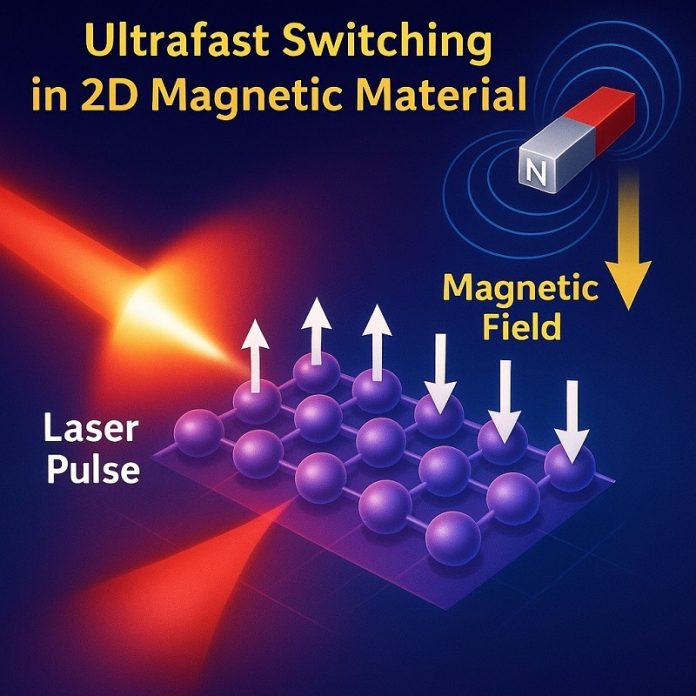
In a breakthrough that could push the speed limits of future data storage and processing technologies, scientists have discovered that strong magnetic fields can control how fast and how efficiently a two-dimensional magnetic material loses its magnetism when hit by a laser.
The findings may help develop next-generation spintronic devices that operate a million times faster than today’s electronics.
The study, led by Professor Sheng Zhigao from the Hefei Institutes of Physical Science and Professor A.V. Kimel from Radboud University, was published in National Science Review.
The team focused on an advanced magnetic material called Fe₃GeTe₂—a van der Waals (vdW) ferromagnet made of stacked, ultra-thin layers.
These 2D materials are gaining attention in the field of spintronics, where data is stored and manipulated using the spin of electrons instead of their charge.
Using high magnetic fields and a technique called time-resolved magneto-optical Kerr effect spectroscopy, the researchers looked at what happens inside the material just after it’s hit by an ultrafast laser pulse.
Normally, the laser energy quickly disturbs the spin alignment in the material, a process called ultrafast demagnetization, which can happen in less than a trillionth of a second.
The team found something surprising. When they applied a strong 7-tesla magnetic field—much stronger than what’s used in most previous studies—the material lost its magnetization 60% faster than without the field.
At the same time, however, the overall amount of magnetization lost dropped by 34%. This combination of speeding up and reducing the effect had never been observed before.
To explain this unusual result, the researchers studied the material at different temperatures and proposed a model based on spin entropy, or the disorder of spins in the system.
This model is part of a well-known framework called the three-temperature model, which helps scientists understand how energy moves between electrons, spins, and atoms in a material.
Unlike other explanations that rely on unique material properties, this model could apply to many different magnetic materials, making the discovery even more important.
Interestingly, the magnetic field’s effects were stronger at warmer temperatures around 200 Kelvin (about –73°C), bringing the possibility of practical uses closer to real-world conditions. This study opens the door to using magnetic fields to fine-tune ultrafast spin behavior in materials, paving the way for new kinds of ultrafast, high-efficiency memory and computing devices.
Source: Chinese Academy of Sciences.


